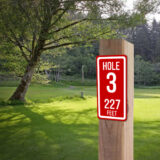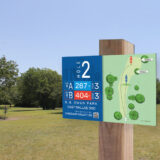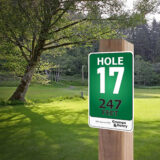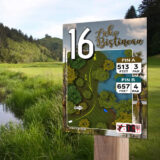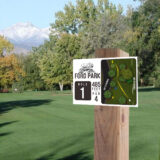In the dynamic world of disc golf, where precision and control reign supreme, understanding how the wind influences disc flight is a skill that separates the casual player from the seasoned pro. Flight ratings, those four enigmatic numbers on every disc, offer a roadmap to a disc’s behavior in calm conditions. But when the winds come into play, the game takes on a whole new level of complexity. In this blog post, we’ll explore the intricate dance between wind, flight ratings, and disc golf strategy, drawing parallels to other sports to highlight the unique challenges disc golfers face in the breeze.
Decoding Flight Ratings: A Quick Refresher:
Before we dive into the wind’s influence, let’s quickly recap what those flight ratings mean. Discs are characterized by four numbers:
- Speed (e.g., 9): Overall aerodynamic speed of the disc.
- Glide (e.g., 5): The disc’s ability to generate lift and stay in the air.
- Turn (e.g., -1): Initial tendency of the disc to turn right (for right-handed backhand throws).
- Fade (e.g., 2): Tendency of the disc to hook left at the end of the flight.
Wind Dynamics and Disc Flight:
Understanding wind dynamics is crucial to mastering disc golf. Wind can come from different directions, and its speed can vary. Here’s how wind from different directions can affect disc flight:
- Headwind: Wind coming directly at the thrower. It can exaggerate a disc’s fade and reduce its glide, making it less stable.
- Tailwind: Wind coming from behind the thrower. It can reduce a disc’s fade, increase its glide, and potentially make it more understable.
- Crosswind: Wind blowing across the direction of the throw. It can influence the turn of the disc, pushing it to the side.
Adapting Disc Selection for Wind:
Now, let’s explore how wind prompts players to reconsider their disc choices:
- Headwind: Players might opt for more stable discs with a higher fade to counter the headwind’s tendency to exaggerate the turn. A disc with extra stability can maintain a straighter flight path.
- Tailwind: In tailwinds, players may select discs with less fade and more glide to take advantage of the wind’s push, potentially achieving longer distances.
- Crosswind: Players often adjust by choosing discs with different turn ratings, compensating for the wind’s influence on the disc’s lateral movement.
Comparisons to Other Sports:
To grasp the significance of wind in disc golf, consider how it dramatically affects a disc compared to other sports:
- Golf: Much like a golf ball, a disc’s flight can be swayed by the wind, requiring players to adjust their strategy based on wind conditions.
- Soccer/Football: The wind’s impact on a soccer ball’s trajectory is comparable to its influence on a disc, adding an extra layer of complexity to the game.
- Baseball: While a baseball’s weight can make it less susceptible to wind, a disc’s lighter weight and larger surface area make it more vulnerable to wind effects.
Wind introduces an exciting and challenging element to disc golf, turning the fairways into a chessboard of strategic choices. Understanding how flight ratings interact with wind conditions empowers players to make informed decisions, adapt their disc selection, and ultimately navigate the skies with confidence.
So, the next time the wind whispers across the course, let your flight ratings be your guide, and may your throws dance seamlessly through the air, mastering the wind and conquering the game. In this unique intersection of precision, power, and nature’s unpredictability, the skilled disc golfer finds not only challenge but also an opportunity to showcase their mastery of the elements.

